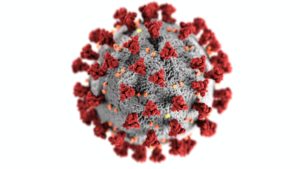In response to the current pandemic, RPA Engineering has been actively engaged in research of the transmission of airborne viruses and how it relates to the design of the built environment. Our goal is to have a deep understanding of various airborne viruses beyond how we may apply mitigation technologies and strategies available on the current market. This starts with conducting research to understand a wide-range of viruses, not just COVID-19, understanding the transmission methods, how contagious and deadly they are as well as their vulnerabilities to light, temperature and humidity. Most of all, we want to be a steward to the communities that we serve.

Social Distancing is one of the most common source-control strategies that we now employ in our everyday lives as we navigate the challenges of the pandemic. Social Distancing has its roots in the Spanish Flu Pandemic of 1918 and is otherwise known as Physical Distancing. But how did this strategy come to be?
Social Distancing is based on a theory of droplet transmission of viruses developed by William F. Wells, in regard to the spread of tuberculosis. As such it was noted that a wide size range of particles are produced from a cough or sneeze from a tuberculosis patient. In addition, small droplets would rapidly evaporate and leave behind less infectious dried aerosol particles. Larger droplets would be the main transmission pathway but would be removed by gravity and not travel long distances. As it follows, being an appropriate distance away, where gravity would prevail and prevent these larger droplets from making their way to another person.
While this seems trivial at first-glance, a closer look into these basic principles along with the help of modern technology such as Computational Fluid Dynamics (otherwise known as CFD or CFD modeling), it is believed that smaller aerosols do not evaporate quickly and can linger in the air for extended periods of time and travel up 26 feet. However, what this does not take into account is the effect of wearing a mask. Research shows that most particles travel only 1.5 meters or 4.9 ft when a mask is properly worn, therefore reinforcing separation distances of 6 ft. This is why it is critical to properly wear a mask and protect those around you. None of us want to wait outside the Grocery Store 26 feet apart!

RPA Engineering is a leading engineering and design firm with five regional offices in the Eastern United States. Headquartered in Wyomissing, PA, we also have offices in Pittsburgh and Valley Forge as well as Raleigh, NC and Venice, FL.
Please follow us on social media as we plan to continually release new information as we walk along our path of discovery.
Research completed and shown in this post is property of RPA Engineering and cannot be duplicated without express permission from RPA Engineering.
